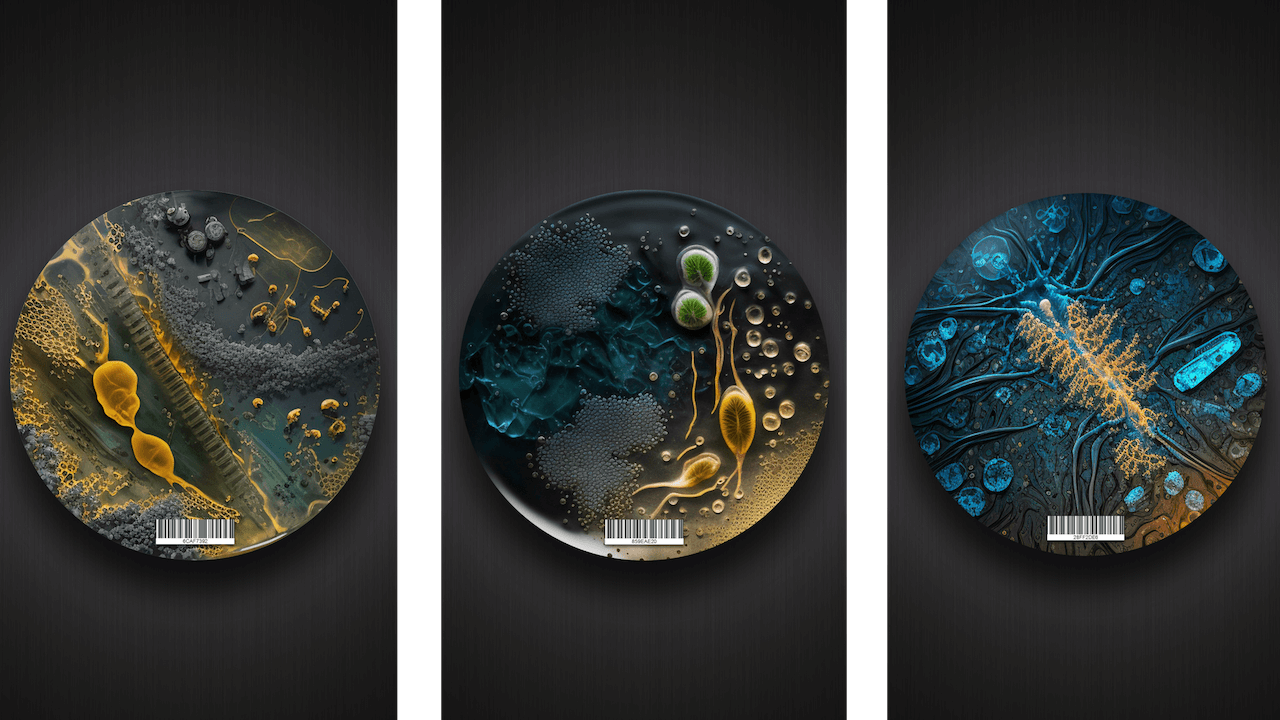Self-Driven Techno-Organic Emergences
Commissioned Work for ART021 Contemporary Arts Fair & Media Architecture Biennale
Generative AI, animation, 3D design, resin printing
2022
Generative AI, animation, 3D design, resin printing
2022



Practices of biological sciences have demonstrated that the creation of synthetic life can be made within a laboratory. In 2010, a research team led by Craig Venter created the first self-replicating synthetic bacterial cell; the mycoplasma mycoides JCVI-syn1.0 was chemically synthesized and was successfully transplanted into a recipient cell that produced a new self-replicating cell controlled only by a synthetic genome. A wide range of practices within this discipline has demonstrated the development of artificial organic systems for environmental remediation, the manipulation, and modification of genome sequencing, or the integration of engineering and nanotechnology with biological matter. Pavel Gotovtsev also suggests methods of moving the Internet of Things close to synthetic biotechnology, utilizing cells as objects to process via genetic logic circuitry and hence advance sensor networking. Applications of this Internet of Nano-Things are being investigated in healthcare, agriculture, as well as intelligent infrastructure for architecture and the city.
This work builds on practices cultivated in scientific paradigms and expands its speculation on the creation of synthetic matter that is uninterruptedly connected and controlled by Artificial Intelligence. Under this supposition, a question is formed:
What happens to our surrounding architectures when machines with autonomous agency begin to control the physical properties of computationally-enhanced synthetic matter?
Parasites are organisms that live on or inside the body of a host, with their main aim being to derive their sustenance from it. Unlike predators, which kill and consume their prey, parasites typically do not instigate the death of their host but may cause harm or discomfort, or in some cases build a symbiotic mutualistic relationship. Parasites can be found in many different forms, including bacteria, viruses, fungi, protozoa, and worms. They can infect a wide range of hosts, including plants, animals, and even other parasites. Some parasites are transmitted directly from one host to another, while others are transmitted through intermediate hosts or vectors (such as mosquitoes or ticks). In this instance, parasitic organisms have been created and generated with artificial means. A machine learning model was trained using data collected from real parasitic organisms and their properties. This resulted in a series of diagrams and 2D forms that were analyzed by both the human creator and the machine. The analysis assisted the design of three-dimensional models that integrate the conceptual synthetic properties and emerge as a physical objects in real space. The synthetic parasites have been 3D-printed using a specialized resin material.